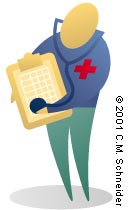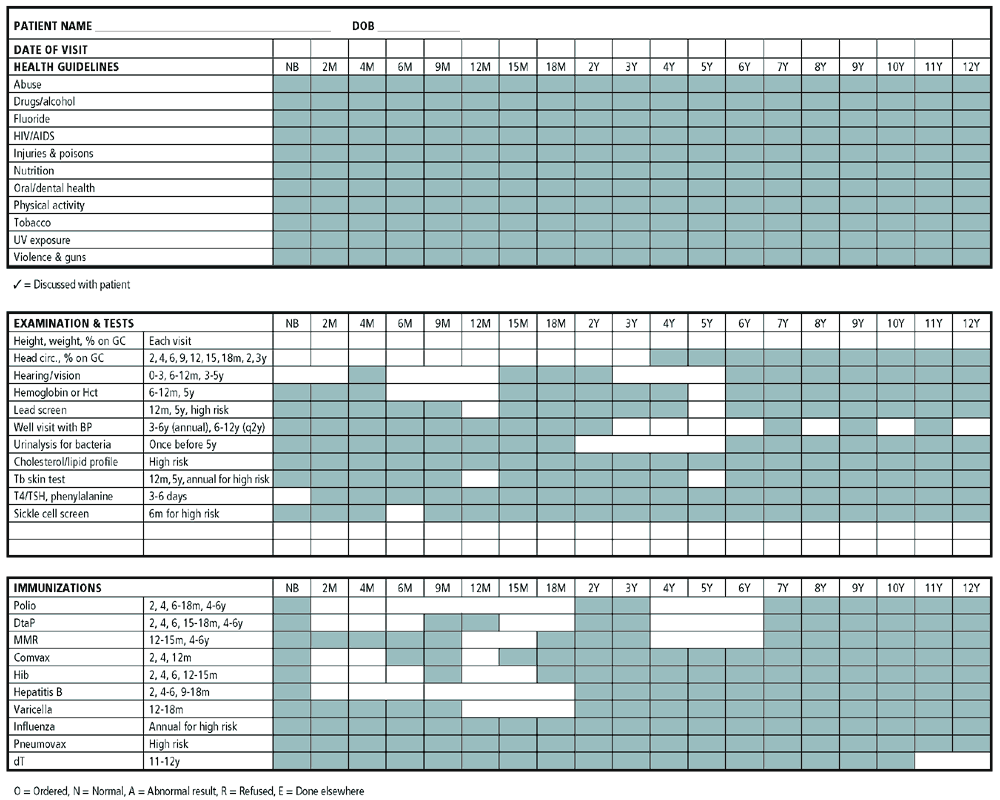
Even the best preventive medicine tools won’t work until physicians are convinced they’re worth using.
Fam Pract Manag. 2001;8(2):51-53

Health promotion and disease prevention are major principles of family medicine; however, numerous studies have demonstrated that delivery of preventive services in physician practices is sub-optimal. To enhance preventive care, the U.S. Public Health Service’s Office of Disease Prevention and Health Promotion introduced the Put Prevention Into Practice (PPIP) initiative in 1994. Central to the initiative is a set of materials physicians can use to improve delivery of preventive services, including the following (found online at www.ahrq.gov/clinic/ppipix.htm):
Clinician’s Handbook of Preventive Services, a practical guide to preventive care and screening;1
“Implementing Preventive Care,” a tutorial on how to implement preventive care systems in the office;
Personal health guides for adults and children, including translations in Spanish;
Preventive care timeline posters for patient education;
Patient reminder postcards;
Preventive care flow sheets, which can be adapted and placed in the patient’s medical record.
Interestingly, studies assessing the effectiveness of PPIP materials have shown only modest improvement in utilization of preventive care services. This was our unfortunate experience when the PPIP program was introduced in the outpatient office of the family practice residency at Wesley Medical Center. We had hoped PPIP would enhance delivery of preventive services for our patients and provide a tool that residents could readily adapt for their practices after graduation. However, the materials were rarely utilized.
At the outset of our PPIP initiative, physician members of the implementation team studied the Clinician’s Handbook of Preventive Services and developed consensus regarding which services were appropriate to our patient population and how often each should be performed. We then developed five separate preventive care flow sheets based on patient age and gender, and we established office protocols to ensure that medical records staff placed the appropriate flow sheet on each patient’s chart when he or she presented to the office. Physicians were expected to complete the forms during office visits. We held in-service sessions with all faculty, residents and patient care staff to explain the PPIP system. Faculty made inspection of the flow sheet a routine part of review of each resident’s patient charts. New residents, faculty and office staff members received PPIP instruction during their orientation to the office. We even held quarterly chart audits to assess our use of preventive care flow sheets.
Yet at the end of one year, using data collected on 200 patient records, we found that while the appropriate flow sheet was present on 159 of 200 patient records (80 percent), physicians had documented preventive services on only 15 of the 159 charts (9 percent). Needless to say, we were not satisfied with these results.
Back to the drawing board
Hoping our data would drive improvement, we shared our audit results with the group at a regularly scheduled physician staff meeting and invited the group to explore why our rates were so low. Their feedback centered on two issues:
The absence of the proper flow sheet on 20 percent of the charts was high enough that physicians considered the system unreliable and, therefore, a waste of time.
Physicians believed the flow sheets were too complex and time-consuming to complete during office visits.
To address the group’s concerns, we simplified the flow sheets according to a description by Bowman in an article on cancer screening.2 One example of the revised flow sheets is shown below. The key improvement was creating columns that indicate the ages at which preventive services are recommended. Under each column heading, boxes are either left white to indicate that services are needed at that age or shaded to indicate that services are not needed. Physicians simply fill in the appropriate boxes at each visit; in some cases, only a check mark is required.
PREVENTIVE CARE FLOW SHEET
The following flow sheet detailing preventive services for children from birth to 12 years old is one of nine prepared by the authors and their colleagues at the outpatient office of the family practice residency at Wesley Medical Center, Wichita, Kan. The flow sheets are placed on all patient charts and serve as preventive care reminders. Physicians simply mark the appropriate box during the patient visit as services are provided. White areas indicate that services are at the outpatient office of the family practice residency at Wesley Medical Center, Wichita, Kan. The flow sheets are placed on all patient charts and serve as needed for a specific age group; shaded areas indicate that services are not needed at that age. All nine flow sheets are available as downloads.

Adding age-specific columns forced us to increase the total number of preventive flow sheets from five to nine: child, birth to 12 years old; adolescent/young adult male, 13–30; adolescent/young adult female, 13–30; adult male, 31–49; adult female, 31–49; adult male, 50–64; adult female, 50–64; adult male, 65 and above; and adult female, 65 and above.
We introduced the revised flow sheets in a series of in-service sessions for physicians and staff. We instructed medical records personnel to place a revised flow sheet on each chart as it was pulled for an office visit. If the chart already had an original version flow sheet, it was removed unless it contained physician documentation, in which case the original flow sheet was left in place and a new revised form was simply added.
Over the following year, we collected a convenience sample of 50 charts quarterly as before. After the flow sheet revision, the proper age and gender flow sheet was present on 185 of 199 charts sampled (93 percent), a significant improvement (p < .001, by chi square). Physician completion of flow sheets improved dramatically to 108 of 185 (58 percent, p < .001).
At the end of that year, we surveyed faculty and resident physicians with written questions regarding their use of the revised flow sheets and solicited suggestions for improvements. Twenty-five of the 32 faculty and resident physicians at the residency completed surveys (78 percent response rate). Of the 25 survey respondents, 21 had experience with both the original flow sheets and the revised ones. Nineteen of these 21 physicians (90 percent) found the revised flow sheets easier to use than the originals. Three physicians (12 percent) complained that the revised flow sheets remained time-consuming; five (20 percent) noted it was easy to forget to complete the forms, and two (8 percent) stated that the correct flow sheet was often not available on the patient record.
Our results show that there’s still room for improvement. We have yet to measure direct patient outcomes (such as improvements in immunization rates and other preventive services), a much more involved process. However, this project did demonstrate that our group could use standard performance improvement techniques to improve our documentation of preventive services. Such efforts, we believe, will inevitably improve patient care.